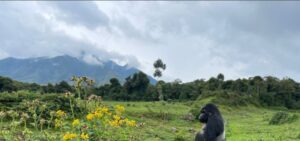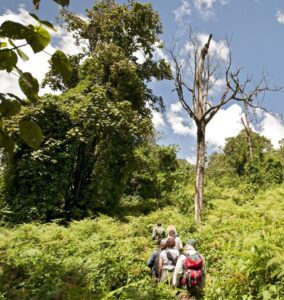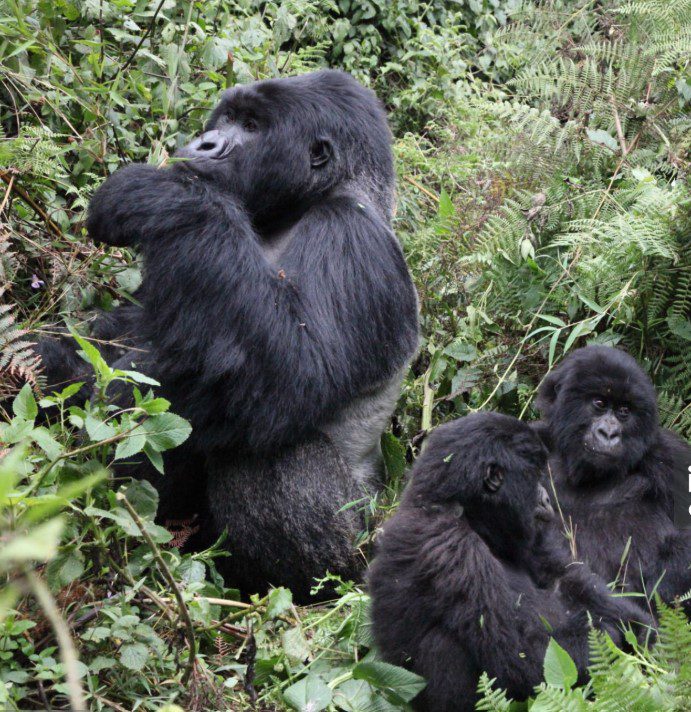How Hard is the Hike to See Mountain Gorillas?
Hiking to see the majestic mountain gorillas is an adventure like no other, a journey that combines physical effort with the thrill of encountering one of the world’s most endangered species. For many, it is a once-in-a-lifetime experience, one that leaves a deep, lasting impression. But before you embark on this extraordinary adventure, it’s important to understand the realities of the hike and the challenges involved. How difficult is it really to trek through the dense forests of Uganda, Rwanda, or the Democratic Republic of Congo to witness these incredible creatures in their natural habitat?
The challenge of the hike to see mountain gorillas is not simply about the physical exertion; it’s about the connection with nature, the determination to push through obstacles, and the reward of an unforgettable encounter. Here’s everything you need to know about the hike to see mountain gorillas, from the difficulty level to the preparation you need to ensure the experience is as enjoyable as it is awe-inspiring.
The Mountain Gorilla Habitat
Mountain gorillas live in the misty, rugged mountains of East Africa, primarily in three countries: Uganda, Rwanda, and the Democratic Republic of Congo. Their natural habitat is located at altitudes of 7,000 to 14,000 feet, making the hike to see them a bit of a challenge for many travelers. The terrain is often steep, muddy, and covered with dense vegetation, creating a unique but tough trekking experience.
In Uganda, the gorillas are found in the Bwindi Impenetrable Forest and Mgahinga Gorilla National Park. In Rwanda, Volcanoes National Park is the main destination for gorilla trekking. In Congo, Virunga National Park offers another chance to see these magnificent creatures. Each destination presents its own set of challenges, but all offer the same profound reward: a chance to see mountain gorillas up close in the wild.
The Difficulty of the Hike
The difficulty of the hike varies based on several factors, including the terrain, weather, and the specific location of the gorilla family you are trekking to see. Some hikes are relatively easy, while others can be quite strenuous. Generally, the hike can take anywhere from 1 to 6 hours, depending on the location and the gorilla group’s movement.
The terrain is often steep and can be slippery, especially during the rainy season, which typically runs from March to May and October to November. The trail may be muddy and overgrown, with thorny bushes, dense underbrush, and unpredictable wildlife. A guide will lead you through the forest, using their local knowledge to navigate through this challenging environment. In some areas, the hike can feel like a real workout as you climb up and down the hills, navigating through thick vegetation.
You may need to endure some challenging conditions, but the trail is often manageable for anyone who is in good physical condition and prepared for a bit of a workout. Gorillas, being wild animals, don’t stay in one place for long, so you might find yourself following their tracks through the forest, which can mean more exertion. The hike is usually done in groups, which helps to make the trek more enjoyable and gives you a chance to share the experience with fellow travelers.
Fitness Level and Preparation

Although gorilla trekking can be physically demanding, it is not necessary to be an elite athlete to take part. However, a reasonable level of fitness is required. Those who are not accustomed to hiking or who have health concerns may find it more challenging. It’s advisable to start a fitness regimen before your trip, focusing on activities like walking, hiking, and cardio exercises to build endurance. If you have the opportunity, try hiking on uneven terrain to get your body accustomed to the conditions you’ll face in the forest.
If you’re concerned about your fitness level, don’t worry. There are porters available at most trekking sites who can assist you along the way. These local guides are familiar with the terrain and can help with carrying your backpack, offering support when needed. Additionally, some people opt for hiring a sedan chair, which can help carry them during the trek. However, this may not be available everywhere, and it’s important to note that the terrain will still require some physical effort.
It’s also a good idea to consult with your doctor before embarking on this hike, particularly if you have pre-existing medical conditions or concerns about your ability to handle the altitude and the physical exertion involved.
What to Expect on the Trek
Each trek to see mountain gorillas is unique, as the animals are wild and move freely through their natural habitat. That said, there are a few common experiences to prepare for:
Briefing: Before the hike begins, you will receive a briefing from your guide. This briefing covers safety protocols, the gorilla groups you might encounter, and how to conduct yourself when in the presence of gorillas. For example, you must remain silent and avoid making sudden movements when near the gorillas.
The Hike: The hike itself can take anywhere from 1 to 6 hours, depending on the gorilla group’s location and the terrain. The trail is typically guided, and your guide will lead the way, helping you navigate the forest. Along the way, you’ll likely pass through thick vegetation, navigate muddy terrain, and climb steep hills. At times, you may need to crawl under branches or duck through dense foliage.
Reaching the Gorillas: When you finally approach the gorillas, the excitement and anticipation will be overwhelming. You will likely spend about an hour with the gorillas, observing them in their natural habitat. You’ll see them forage, play, or rest. The large silverbacks, the dominant males, are particularly captivating to watch. The experience is unforgettable, offering a rare chance to witness these incredible creatures up close.
Returning: After your hour with the gorillas, you’ll begin the trek back to the starting point. By this time, you might be tired, but the exhilaration of the experience will keep you energized. The return trip is usually quicker than the initial hike, as you’re descending and the trail may be easier to navigate.
What to Bring and Wear
To ensure a comfortable and enjoyable trekking experience, it’s important to bring the right gear. Here’s a list of essentials to consider:
Sturdy hiking boots: Waterproof and ankle-supporting boots are essential for navigating the uneven and often slippery terrain.
Lightweight, breathable clothing: Wear long-sleeve shirts and pants to protect yourself from thorns and insects. A lightweight rain jacket is also a good idea, as the weather can change unexpectedly.
Insect repellent: The forests are home to mosquitoes and other insects, so it’s important to protect yourself from bites.
Water: Bring enough water to stay hydrated during the trek. The hike can be physically demanding, so staying hydrated is crucial.
Camera: Don’t forget your camera to capture the moments with the gorillas. However, be mindful of the guide’s instructions regarding the use of flash, as it can disturb the gorillas.
Conclusion
The hike to see mountain gorillas is undoubtedly a challenge, but it is a challenge that brings with it one of the most incredible wildlife experiences on the planet. The trek through dense forests, up steep hills, and across muddy trails is part of what makes the experience so rewarding. The moment you lay eyes on a mountain gorilla, all the effort, sweat, and fatigue will vanish, replaced by a sense of awe and wonder.
So, how hard is the hike to see mountain gorillas? It’s difficult, but it’s not impossible. With the right preparation, a good level of fitness, and the help of experienced guides, you’ll find that the journey is worth every step. The reward of encountering these gentle giants in their natural home is an experience that will stay with you forever, making all the effort truly worthwhile.





